
Types of Cranes Used in the Construction Industry
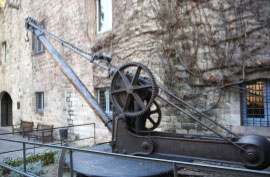
From as far back as the Mesopotamian civilization, cranes have been used for lifting objects that are too heavy or too repetitive to be done manually. Since this type of work is very much used in the construction industry, the use of cranes in it has been invaluable and indispensable since the ancient era. From the ancient Shadouf to roman Polyspastos to modern mobile telescopic cranes, they were used pretty much everywhere on earth.
What is a Crane?
A crane is a machine, comprised of beams, cables, and pullies, which is used to lift or lower heavy objects. An appropriately equipped crane may also move objects horizontally as well as vertically. The mechanism can be supported by a tower or a derrick.
Most cranes used in construction are temporary structures or even mounted on mobile platforms so that they can be moved around the construction site as necessary. They can be taken away when construction finishes in order to leave the site for normal usage. In some cases, where the building in question requires constant maintenance, the engineers may choose to rig a permanent crane with the building.
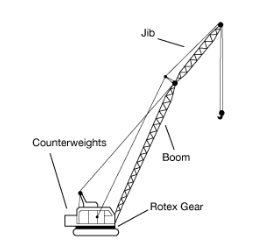
Modern cranes are powered by means of hydraulics that are driven by an electric motor or a combustion engine driven by fossil fuel. Operating (and driving, in case of mobile cranes) the crane is possible from an operators cabin that may be mounted on crane vehicle or rig itself, or a control station beside the crane, or by means of portable radio-operated controllers that gives the crane operator the freedom to move around and see the loading and unloading operation from any reasonable point of view. Taking that flexibility to a newer level, there are some modern cranes available that can even be controlled via mobile phone apps.
Types of Cranes in Building
Depending upon their usage, flexibility, and mobility, there can be several types of cranes to choose from to use in a construction site. The varieties of choices enable the constructor to adapt to any load-lifting requirements on site. Let us see what they are.
Mobile Cranes
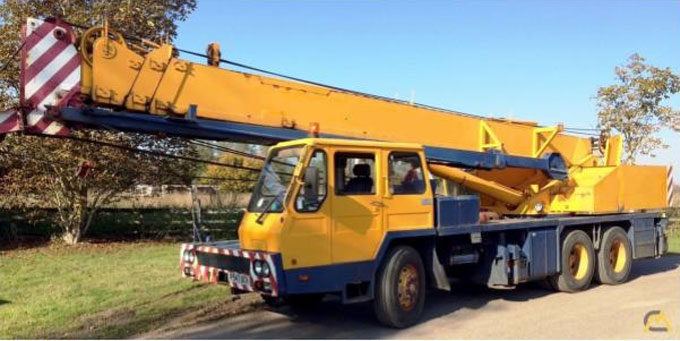
The most common and versatile types of cranes used not only in construction but also for other purposes are mobile cranes. Unless the load-lifting requirement is monstrously huge or has to lifted very high, these agile machines can move in and out to assist in any object-moving scenario. They also come with their own crane operation engine built-in so you do not require to supply mechanism or power from outside. Due to this, mobile cranes are the most numerous and are in the highest demand.
A mobile crane is essentially a truss or boom plus assorted machinery, mounted on a heavy mobile platform, and is powered by the vehicle?s own power source (most of the time). A solid hinge is placed at the bottom of the boom, which can be fixed or telescopic in nature. The most useful features in mobile cranes are its low footprint and mobility. These allow the crane to go into difficult positions where setting up static crane machinery is either physically impossible or economically not feasible.
The downside of using a mobile crane is that with their small footprint they are unable to lift very heavy loads, or else the load itself will topple over the vehicle. Also, due to their size and again because of the small footprint, they cannot hoist weights much high.
Telescopic crane
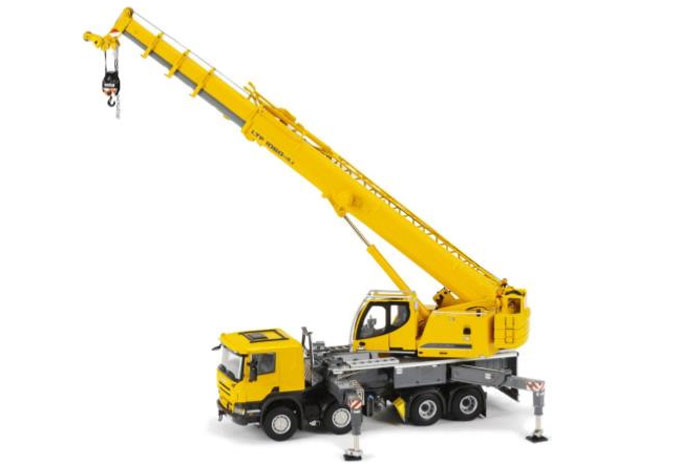
A telescopic crane offers the advantage of extending and collapsing the crane arm as necessary, giving it the flexibility of added height, mobility, and ability to move the load in both axes horizontally. Basically, it is comprised of multiple tubes of slightly different diameter fitted into each other. This allows the tubes to slide in and out of each other and as a result increase or decrease the total length of the entire assembly. A complex hydraulic apparatus drives these tubes to slide in or out. Most construction cranes these days use this type of crane arm, telescopic to some degree.
Tower Crane
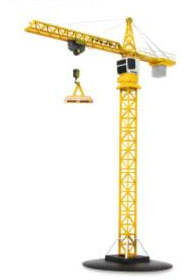
Essentially a balance crane, tower cranes are immobile structures solidly fitted to the ground and generally very tall. There are tower cranes existing today up to a kilometer high. This sort of crane gives excellent hoisting heights, due to the tallness of the crane. Also, due to its fixed nature and balance, tower cranes generally lift the heaviest weights. However, to prevent the slender structure from swaying or tipping, the taller the tower crane goes, the more anchorage it needs at different heights. For this reason, you can see a tower crane getting taller as the building it helps to build is getting erected higher, so each level can be secured to the building.
Boom Truck or Picker Truck
These are very mobile cranes that are mounted on a transport truck. They help in autonomous loading and transportation of the objects when the loading or dropping-off site does not feature a loading/unloading crane. In most cases, these vehicles assist not in the actual construction but in transporting the materials or maybe sections across distance. Due to the light nature of the vehicle and the rubber tires, the load-lifting capacity of these cranes are very low, rarely exceeding 50 tons.
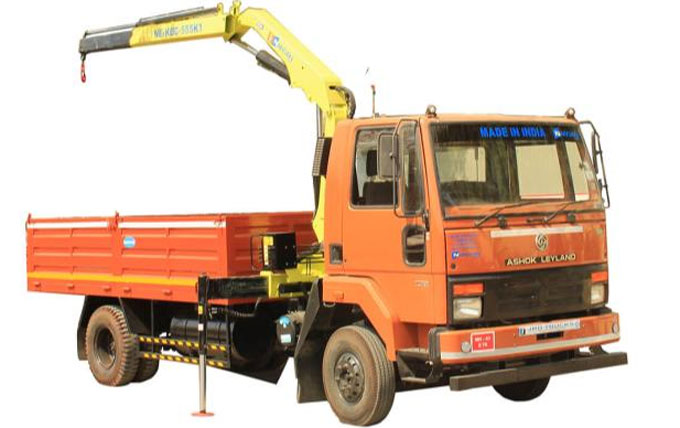
Rough Terrain Crane
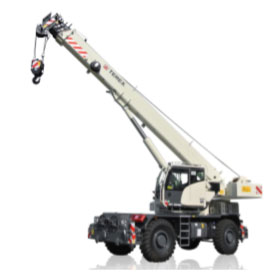
Mounted on an undercarriage that specializes in navigating terrain that is difficult to traverse, you can see these types of cranes mostly in complicated scenarios.
The vehicle rolls on four off-road tires, capable of moving over and operating on very uneven ground thanks to its advanced hydraulic suspension. Outriggers placed on the crane extend vertically and horizontally assist the crane in being level and provide extra stability while operating on difficult terrain.
Ideally used for infrastructure projects, you may see these cranes in highway construction or some far-off projects with little to none road access.
Loader/Folding Boom Crane
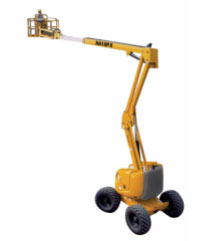
Used for the same flexibility offered by telescopic arm cranes, but with much better capacity, the loader cranes have an articulated arm that can fold back on itself in order to facilitate transportation of the crane. These are mostly used for loading goods on a trailer and assisting other short-term construction requirements. You can also see smaller versions of these lifting one-man inspection platforms under bridges frequently.
Overhead Crane
Also known as a suspended crane, these types of cranes are generally fixed within a factory floor using horizontal booms in order to assist with moving objects from one side to the other side of the floor. Slightly more mobile and much bigger versions of these cranes can be found in docks, lifting and placing containers, called Goliaths. The crane hoist is placed on a mobile trolly that can slide along the length of the boom, and the operator?s cabin is also generally mounted on the boom itself. The boom may move along the other horizontal direction along the length of supporting booms. These cranes are indispensable in modern modular construction facilities where prefabricated building blocks need to be moved around the floor to different fitting, storing and loading sections.
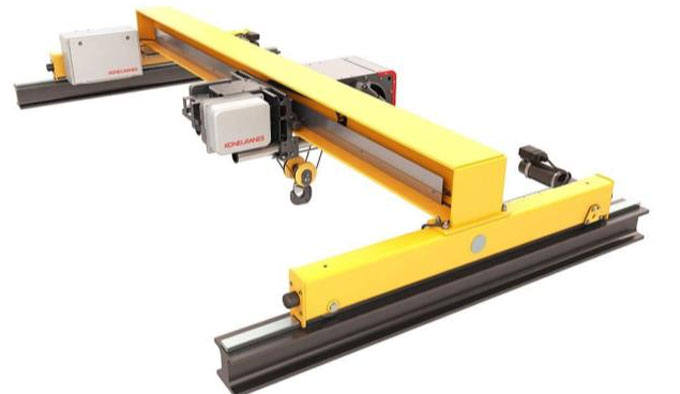
When you are an engineer or a manager deciding on equipment to be used in your construction project, it is imperative that you choose your cranes carefully. According to the needs of different lifting and loading specifications, different types of cranes will need to be used in your operation. Make sure you choose wisely!

